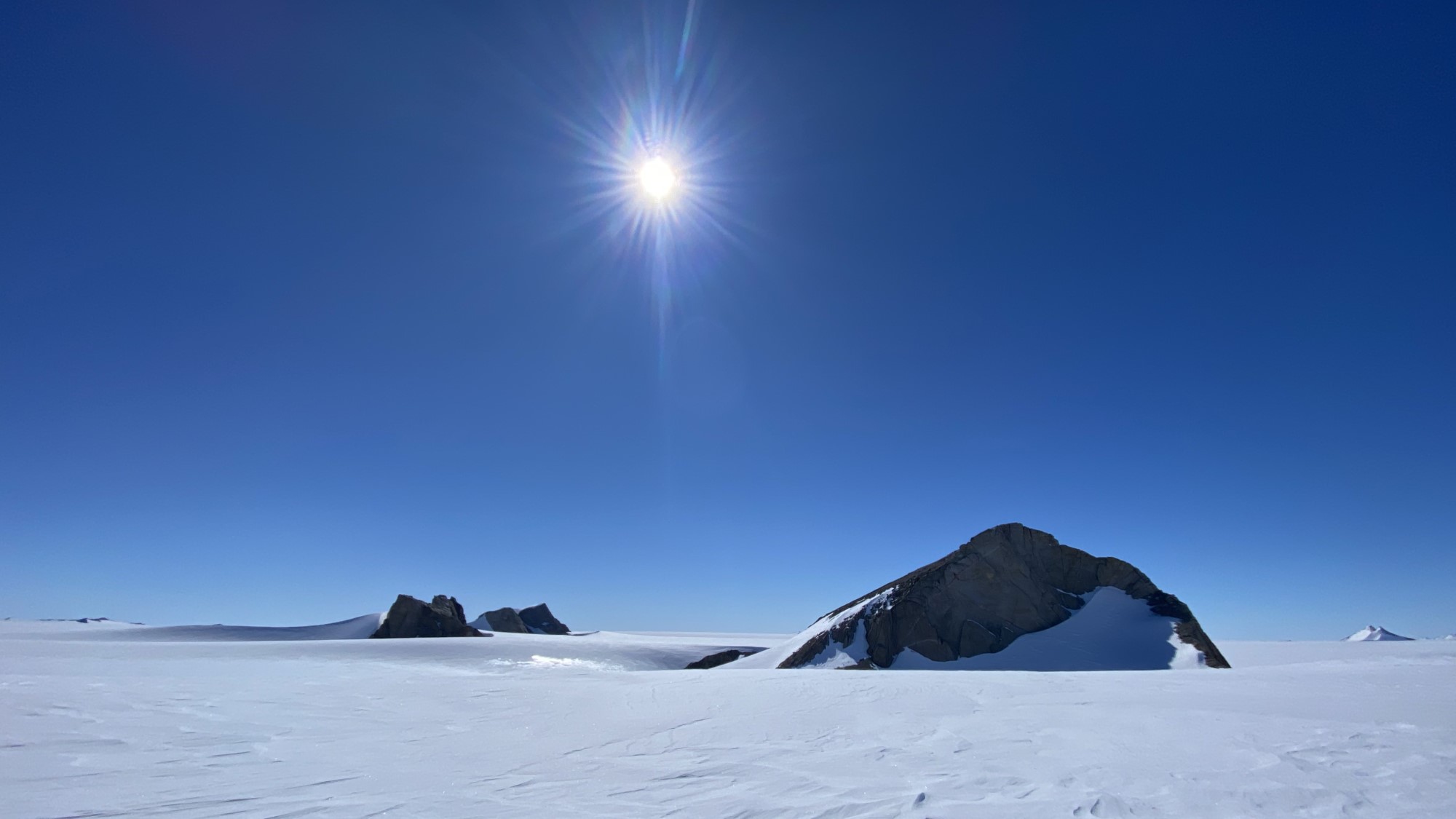Scientists find 17-pound meteorite in icy Antarctica
It's rare to find a meteorite so massive, even in Antarctica.

A daring team of scientists has endured the inhospitable conditions of the icy desert of Antarctica to recover five new meteorites, including a near-17-pound monster space rock.
The team of scientists included Field Museum and the University of Chicago researcher Maria Valdes, who estimated that of the 45,000 meteorites recovered to date from the icy wasteland of Antarctica, only 100 or so have been as large as the largest member of this new haul, which weighs 16.7 pounds (7.6 kilograms).
"Size doesn't necessarily matter when it comes to meteorites, and even tiny micrometeorites can be incredibly scientifically valuable, but of course, finding a big meteorite like this one is rare and really exciting," Valdes said in a statement.
Related: How many meteorites hit Earth every year?
The team, which was led by Vinciane Debaille, a planetary scientist at the Université Libre de Bruxelles (FNRS-ULB) in Belgium, was the first to explore new potential meteor sites that had been mapped using satellite imagery.
"Going on an adventure exploring unknown areas is exciting, but we also had to deal with the fact that the reality on the ground is much more difficult than the beauty of satellite images," Debaille said in the statement.
The team planned their excursion for Antarctica's summer, in late December, but temperatures in the region still hovered at around 14 degrees Fahrenheit (minus 10 degrees degrees Celsius). Valdes said that at some points during the mission, Antarctica was actually warmer than Chicago, but the weather felt more extreme to the team because of days spent riding snowmobiles and trekking through ice fields and nights spent sleeping in tents.
Get the Space.com Newsletter
Breaking space news, the latest updates on rocket launches, skywatching events and more!
With such frigid conditions even in the midst of summer, Antarctica may seem like an unlikely place for anyone to choose to visit, yet for meteorite hunters like this team, this frigid vista offers unique opportunities. That's because Antarctica is one of the best spots across the globe to hunt for meteorites.

Antarctica is a desert with a dry climate, which reduces the amount of weathering experienced by meteorites. Also, across the white snowy landscape, the black hue of these space rocks stands out when they are at the surface of the region.
Conditions in Antarctica are even favorable for the discovery of meteorites that may have sunk beneath the snow and ice. This is because the churning motion of glaciers moving against rock can re-expose meteorites near the surface.
Though there is no denying the largest meteorite recovered by the team is a whopper, it's far from the largest or most massive example of such a space rock to reach Earth's surface. That record is held by the Hoba meteorite in Namibia. Hoba is 9 feet (2.7 meters) long, 9 feet wide and 3 feet (0.9 meters) thick and weighs around 66 tons, or 132,000 pounds (60,000 kg). That's almost 7,765 times heavier than the newly discovered Antarctic meteorite.
The whopping new space rock and the other meteorites recovered by the researchers will now be analyzed at the Royal Belgian Institute of Natural Sciences, while the team members will individually divide and study samples of sediments they collected from Antarctica.
Valdes is excited to learn what secrets the meteorites hold. "Studying meteorites helps us better understand our place in the universe," she said. "The bigger a sample size we have of meteorites, the better we can understand our solar system, and the better we can understand ourselves."
Follow us on Twitter @Spacedotcom or on Facebook.
Join our Space Forums to keep talking space on the latest missions, night sky and more! And if you have a news tip, correction or comment, let us know at: community@space.com.

Robert Lea is a science journalist in the U.K. whose articles have been published in Physics World, New Scientist, Astronomy Magazine, All About Space, Newsweek and ZME Science. He also writes about science communication for Elsevier and the European Journal of Physics. Rob holds a bachelor of science degree in physics and astronomy from the U.K.’s Open University. Follow him on Twitter @sciencef1rst.
-
Norman Hairston Do they ever find rock from Earthbound volcanoes in Antarctica. The recent Honga-Tonga blast reportedly blasted 4 million tons of seawater into space. Has any debris from Honga-Tonga been found?Reply -
Helio Reply
The plume went up to about 36 miles, which is incredible, but this is only about half-way into space. Of course, what goes up must come down.Norman Hairston said:Do they ever find rock from Earthbound volcanoes in Antarctica. The recent Honga-Tonga blast reportedly blasted 4 million tons of seawater into space. Has any debris from Honga-Tonga been found? -
Helio The three main classes of asteroids, (C, S & M) suggests this might be an S-type (Silicates with Ni & Fe). I simply guessed ~ 3.5 cm effective radius, and out popped ~17 lbs. :)Reply -
Classical Motion I have look at about a dozen search results on this story. And everybody keeps using the terms "big" and "size". But the only reporting parameter is weight.Reply
Does anybody know what size and how big this object is? -
billslugg It's about the size of a volleyball.Reply
17-pound meteorite in icy Antarctica - Search Images (bing.com)









